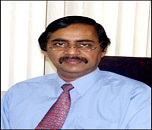Pro.Rao Sripathi - Dentistry 2018 -Speaker

Dr B.H. Sripathi Rao , Professor and Head of the Department of Oral and Maxillofacial Surgery is the present Principal/ Dean of Yenepoya Dental College, Yenepoya, Mangalore, Karnataka, India. He has wide experience in Orthognathic surgeries, Facial Trauma, Oral Cancer surgeries, Pathologies and Cleft Surgeries .He has been in maxillofacial Surgery teaching and training program for more than 35 years now with numerous publications and had been invited guest speaker to various international and national forums .He was also an executive member of the Dental Council Of India. ABSTRACT : Nasal Geometry – Changes after Maxillary Osteotomies and Corrective Measures The primary objective of all orthognathic surgeries inconjuction with proper occlusion is to improve facial esthetics A change in Nasal Geometry after Maxillary osteotomy is a common pertinent problem encountered by all maxillofacial surgeons. With changes in the facial skeleton following surgery, the facial drapes adapts to...
